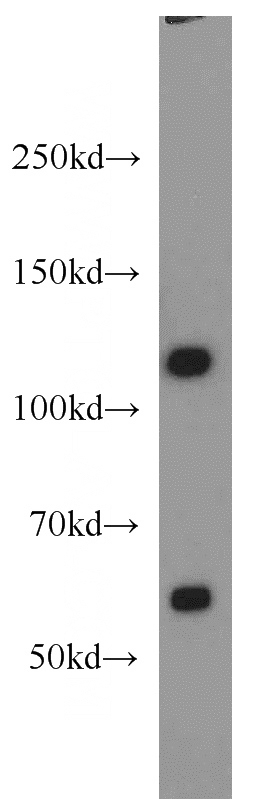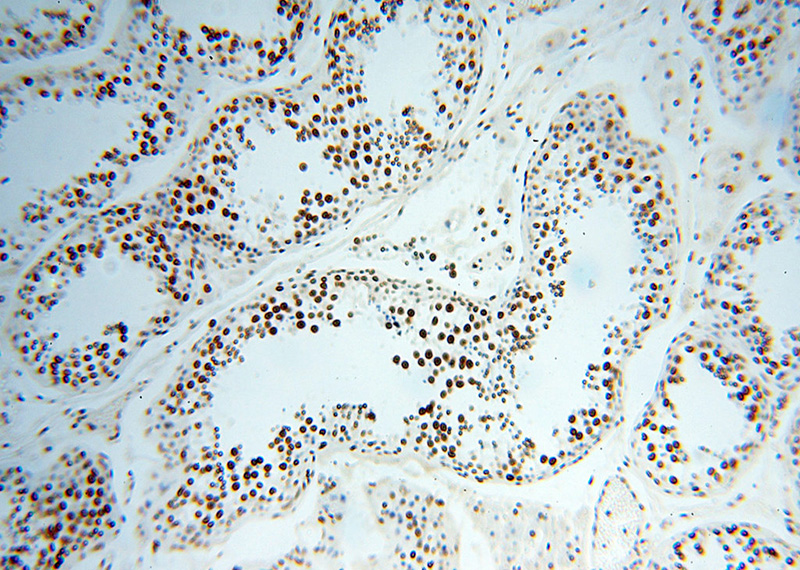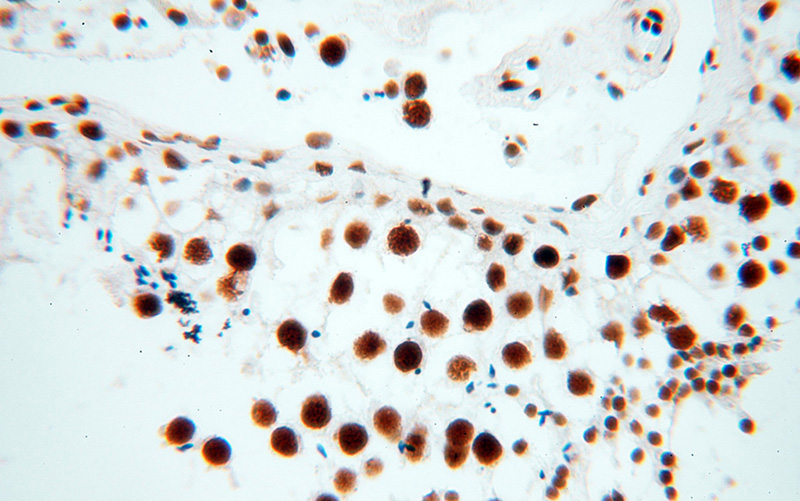-
Product Name
SART3 antibody
- Documents
-
Description
SART3 Rabbit Polyclonal antibody. Positive IHC detected in human testis tissue, human brain tissue, human kidney tissue, human liver tissue, human lung cancer tissue, human lung tissue, human ovary tissue, human placenta tissue, human skin tissue, human spleen tissue. Positive IP detected in HeLa cells. Positive WB detected in HeLa cells, Jurkat cells. Observed molecular weight by Western-blot: 110-120 kDa
-
Tested applications
ELISA, WB, IHC, IP
-
Species reactivity
Human,Mouse,Rat; other species not tested.
-
Alternative names
DSAP1 antibody; hSART 3 antibody; KIAA0156 antibody; P100 antibody; p110 antibody; p110(nrb) antibody; RP11 13G14 antibody; SART 3 antibody; SART3 antibody; TIP110 antibody
-
Isotype
Rabbit IgG
-
Preparation
This antibody was obtained by immunization of SART3 recombinant protein (Accession Number: NM_014706). Purification method: Antigen affinity purified.
-
Clonality
Polyclonal
-
Formulation
PBS with 0.02% sodium azide and 50% glycerol pH 7.3.
-
Storage instructions
Store at -20℃. DO NOT ALIQUOT
-
Applications
Recommended Dilution:
WB: 1:500-1:5000
IP: 1:200-1:2000
IHC: 1:20-1:200
-
Validations

HeLa cells were subjected to SDS PAGE followed by western blot with Catalog No:114973(SART3 antibody) at dilution of 1:1000

Immunohistochemical of paraffin-embedded human testis using Catalog No:114973(SART3 antibody) at dilution of 1:100 (under 10x lens)

Immunohistochemical of paraffin-embedded human testis using Catalog No:114973(SART3 antibody) at dilution of 1:100 (under 40x lens)

IP Result of anti-SART3 (IP:Catalog No:114973, 4ug; Detection:Catalog No:114973 1:700) with HeLa cells lysate 2000ug.
-
Background
The process of mRNA splicing required assembly of pre-mRNA into a large, dynamic RNA-protein complex, in which 5 small nuclear RNAs and more than 50 protein components are incorporated into functional small nuclear ribonucleoproteins(snRNPs). SART3 interacts with U6 snRNA and functioned as a U6-specific recycling factor responsible for regeneration of base-paired U4/U6 snRNPs from post-spliceosomal free U4 and U6 snRNPs. Also it can interact and regulate Tat transactivation activity, and act as a cellular factor for HIV-1 gene expession and viral replicaiton.
Related Products / Services
Please note: All products are "FOR RESEARCH USE ONLY AND ARE NOT INTENDED FOR DIAGNOSTIC OR THERAPEUTIC USE"
